Mammals
Media

Species Types
Scientific Name
Perimyotis subflavus (formerly Pipistrellus subflavus)
Description
Tri-colored bats, formerly called eastern pipistrelles, are relatively small and look pale yellowish or pale reddish brown. The main hairs are dark gray at the base, broadly banded with yellowish brown, and tipped with dark brown.
Media

Species Types
Scientific Name
Myotis lucifugus
Description
The little brown myotis (little brown bat) is one of our most common bats, but populations are declining. White-nose syndrome has taken a heavy toll in northeastern states. This species is now listed as vulnerable across its range.
Media
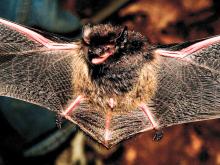
Species Types
Scientific Name
About 14 species in Missouri
Description
Bats are the only mammals capable of sustained flight. At least 14 species of bats occur in Missouri; they are all relatively small, and they eat insects. Many of them are declining.
Media

Species Types
Scientific Name
Dasypus novemcinctus
Description
There’s no other animal in Missouri that can be mistaken for an armadillo! In the 1950s, they were not considered residents, but now they are regularly found in the southern half of the state.
Media

Species Types
Scientific Name
Peromyscus maniculatus
Description
The deer mouse is found statewide, usually in open habitats like fields and grasslands. It and our other three species of Peromyscus mice look a lot alike.
Media
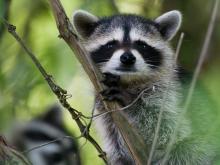
Species Types
Scientific Name
Procyon lotor
Description
When you see the black mask and striped tail of this medium-sized mammal, you know you’ve spotted a raccoon. These nocturnal omnivores are clever and adaptive.
Media
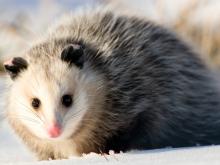
Species Types
Scientific Name
Didelphis virginiana
Description
The Virginia opossum is North America's only native marsupial. Its life history, biology, and habits make this nocturnal mammal worthy of appreciation. What other mammal in our state can hang by its tail, play dead, and carry its young in a pouch?
Media
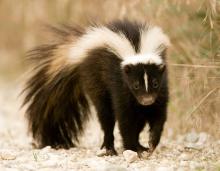
Species Types
Scientific Name
Mephitis mephitis
Description
Skunks are omnivorous mammals notorious for their ability to discharge an obnoxious scent when provoked. The striped skunk is the most commonly encountered skunk in our state.
Media

Species Types
Scientific Name
Marmota monax
Description
One of the best-known wild mammals in Missouri, the woodchuck, or groundhog, is a rodent in the squirrel family. They hibernate in burrows from late October to sometime in February.
Media
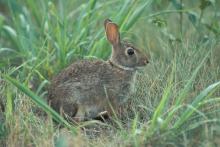
Species Types
Scientific Name
Sylvilagus floridanus
Description
The eastern cottontail is a rabbit with a perfect name. Its tail, when raised, has a conspicuously white undersurface, resembling a fluff of cotton.
See Also
About Mammals in Missouri
More than 70 species of wild mammals live in Missouri: opossums; shrews and moles; bats; rabbits; woodchuck, squirrels, beaver, mice, voles, and other rodents; coyote, foxes, bear, raccoon, weasels, otter, mink, skunks, bobcat, and other carnivores; deer and elk; and more. Most of us recognize mammals easily — they have fur, are warm-blooded, nurse their young, and breathe air.





















